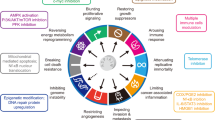Abstract
Numerous epidemiological studies have found a reduced risk to develop colorectal cancer of persons with a regular intake of aspirin or other non-steroidal antiinflammatory drugs (NSAIDs). Clinical trials with NSAIDs in patients suffering from Familial Adenomatous Poliposis Coli (FAP) due to a germline mutation in the APC-tumor suppressor gene have clearly shown a regression of already existing colorectal adenomas`. Furthermore, animal models of colon and skin cancer have demonstrated a reduction in tumor multiplicity and incidence by a continuous application of NSAIDs, such as aspirin, sulindac3indomethacin4piroxicam5SC-581256Celecoxib’, (and our own unpublished observation), and MF-tricyclic8. Experimental colon carcinogenesis was studied in the azoxymethane-treated rat and in Min mice, which carry a heterozygous germline deletion in the APC-gene and spontaneously develop adenomas throughout the intestinal tract. Squamous cell carcinogenesis has been studied predominantly in mouse skin. Here, tumorigenesis is initiated by a single mutation of the cellular Ha-ras gene, induced by exposure to a low dose of the carcinogen dimethyl-7,12-benz(a)anthracene. Initiated epidermal keratinocytes grow into macroscopically visible tumors only upon repeated treatment with tumor promoters such as the phorbolester TPA. Most of the papillomas regress, but some of them progress into carcinomas in the absence of any further treatment.
Access this chapter
Tax calculation will be finalised at checkout
Purchases are for personal use only
Preview
Unable to display preview. Download preview PDF.
Similar content being viewed by others
References
W.E. Smalley, and R.N. DuBois, Colorectal cancer and nonsteroidal anti-inflammatory drugs.Adv. Pharmacol.39:1 (1997).
C.J. Barnes, and M. Lee, Chemoprevention of spontaneous intestinal adenomas in the adenomatous polyposis colt min mouse model with aspirin.Gastroenterol114:873 (1998).
V.R. Chinthalapally, A. Rivenson, B. Simi, E. Zang, G. Kelloff, V. Steele, and B.S.Reddy, Chemoprevention of colon carcinogenesis by sulindac, a nonsteroidal anti-inflammatory agent.Cancer Res55:1464 (1995).
G. Fürstenberger, M. Gross, and F. Marks, Eicosanoids and multistage carcinogenesis in NMRI mouse skin: Role of prostaglandin E and F in conversion (first stage of tumor promotion) and promotion (second stage of tumor promotion).Carcinogenesis10:91 (1989).
R.F. Jacoby, D.J. Marshall, M.A. Newton, K. Novakovic, K. Tutsch, C.E. Cole, R.A. Lubet RA, et al., Chemoprevention of spontaneous intestinal adenomas in the ApcM“ mouse model by the nonsteroidal anti-inflammatory drug piroxicam.Cancer Res.56: 710 (1996).
K. Müller-Decker, A. Kopp-Schneider, F. Marks, K. Seibert, and G. Fürstenberger, Localization of prostaglandin H synthase isoenzymes in murine epidermal tumors: suppression of skin tumor promotion by COX-2 inhibition.Molec. Carc.23:36 (1998).
S. Fischer, H.H. Lo, G.B. Gordon, K. Seibert, G. Kelloff, R.A. Lubet, and C.J. Conti, Chemopreventive activity of celecoxib, a specific cyclooxygenase-2 inhibitor, and indomethacin against ultraviolet light-induced skin carcinogenesis.Molec. Carc.25:231 (1999).
M. Oshima, J.E. Dinchuk, S.L. Kargman, H. Oshima, B. Hancock, E. Kwong, J.M. Trzaskos, J. F. Evans, and M.M. Taketo, Suppression of intestinal poliposis in Apc 716 knockout mice by inhibition of cyclooxygenase 2 (COX-2).Cell87:803 (1996).
J.R. Vane, Y.S. Bakhle, and R.M. Botting, Cyclooxygenases 1 and 2.Annu. Rev. Pha. macol.38:97 (1998).
S. Chariyalertsak, V. Sirikulchayanonta, D. Mayer, A. Kopp-Schneider, G. Fürstenberger, F. Marks, and K. Müller-Decker, Aberrant cyclooxygenase isozyme expression in human intrahepatic cholangiocarcinoma.Gutaccepted 2000.
K. Müller-Decker, C. Albert, T. Lukanov, G. Winde, F. Marks, and G. Fürstenberger. Cellular localization of cyclo-oxygenase isozymes in Crohn’s disease and colorectal cancer.Int. J. Colorectal Dis.14:212 (1999).
K. Müller-Decker, K. Scholz, F. Marks, and G. Fürstenberger, Differential expression of prostaglandin H synthase isoenzymes during multistage carcinogenesis in mouse epidermis.Molec. Carc.12:31 (1995).
K. Müller-Decker, G. Reinerth, P. Krieg, R. Zimmermann, H. Heise, C. Bayerl, F. Marks, and G. Fürstenberger, Prostaglandin H synthase isoenzyme expression in normal and neoplastic human skin.Int. J. Cancer82:648 (1999).
S.Y. Buckman, A. Gresham, P. Hale, G. Hruza, J. Anast, J. Masferrer, and A.P. Pentland, COX-2 expression is induced by UVB exposure in human skin: implications for development of cancer.Carcinogenesis19:723 (1998).
T. Kawamori, C.V. Rao, K. Seibert, B.S.Reddy, Chemopreventive activity of Celecoxib, a specific cyclooxygenase-2 inhibitor, against colon carcinogenesis.Cancer Res.58:409 (1998).
Author information
Authors and Affiliations
Editor information
Editors and Affiliations
Rights and permissions
Copyright information
© 2002 Springer Science+Business Media New York
About this chapter
Cite this chapter
Müller-Decker, K., Charyalertsak, S., Albert, C., Reinerth, G., Marks, F., Fürstenberger, G. (2002). Cyclooxygenase-2: A Molecular Target For Chemoprevention Of Epithelial Tumors Of Skin And Colon. In: Honn, K.V., Marnett, L.J., Nigam, S., Dennis, E., Serhan, C. (eds) Eicosanoids and Other Bioactive Lipids in Cancer, Inflammation, and Radiation Injury, 5. Advances in Experimental Medicine and Biology, vol 507. Springer, Boston, MA. https://doi.org/10.1007/978-1-4615-0193-0_69
Download citation
DOI: https://doi.org/10.1007/978-1-4615-0193-0_69
Publisher Name: Springer, Boston, MA
Print ISBN: 978-1-4613-4960-0
Online ISBN: 978-1-4615-0193-0
eBook Packages: Springer Book Archive




